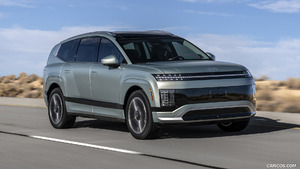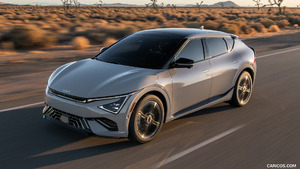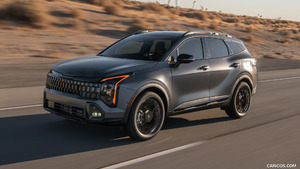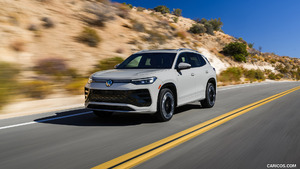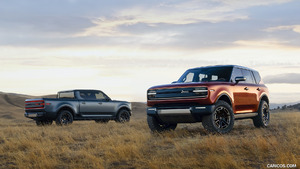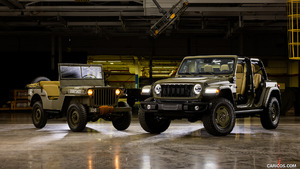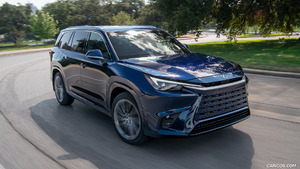Mercedes-Benz S-Class Cabriolet
The new Cabriolet is the sixth variant of the current S-Class family and the first open-top luxury four-seater from Mercedes-Benz since 1971. It offers a distinctive, sensual and exclusive design, the cutting-edge technology of the S-Class and a comprehensive warmth and wind protection concept which includes intelligent climate control for convertibles. The elegantly sporty model will have its world premiere at the Frankfurt International Motor Show in September.
Also on show in Frankfurt will be a superlative dream car from Mercedes‑AMG in the guise of the S 63 4MATIC Cabriolet. Its 5.5-litre V8 biturbo engine offers an output of 430 kW (585 hp) and peak torque of 900 Nm, AMG Performance 4MATIC all-wheel drive with rear-biased torque split as standard and acceleration from 0 to 100 km/h in 3.9 seconds.
"After 44 years we are once again able to offer Mercedes aficionados an open-top car in the S-Class. The new S-Class Cabriolet symbolises our passion for individual and timelessly exclusive mobility, which we share with our customers", remarks Ola Källenius, Board Member of Daimler AG, Mercedes-Benz Cars Sales.
The new S-Class Cabriolet is exceptionally rigid. Innovative solutions such as the luggage compartment bulkhead made of aluminium and magnesium as well as the aluminium rear floor also lower the bodyshell weight to the level of the S-Class Coupé. The standard-fit roll-over protection system behind the rear head restraints features pyrotechnic initiation of the actuators for the first time, in addition to which the roll bars themselves are moved into position by a gas generator.
"Two years after its launch, the S-Class family is now complete. We have never offered six models in the luxury class before - and never before have we enjoyed such success", says Prof. Dr Thomas Weber, Member of the Daimler Board of Management responsible for Group Research and Head of Mercedes-Benz Cars Development. "The S-Class sets the pace on the global market when it comes to safety, efficiency and comfort."
Mercedes-Benz lays claim to building the world's most comfortable convertible. When it comes to climate comfort, the enhanced automatic wind protection system AIRCAP, the AIRSCARF neck-level heating system, the heated armrests, the seat heating also in the rear plus the intelligent climate control ensure that this is indeed the case. In contrast to conventional systems, the climate is controlled fully automatically. This means that the driver does not need to select a mode for closed or open top, nor is it necessary to save a temperature setting for these driving conditions.
A loving attention to detail is also evident in the luggage compartment concept: when the soft top is opened, it folds away into part of the luggage compartment. The soft top is separated from the remaining luggage compartment space by means of an electrically operated retractable cover which encloses the soft top. This luggage compartment partition extends automatically during opening of the soft top. This means that the driver no longer needs to stop in order to operate the luggage compartment cover manually, providing for added convenience. The partition will not be activated if the luggage compartment is loaded such that there are objects in the area of the partition. When the soft top is closed, the luggage compartment partition can be retracted by pressing a button in the inner panelling of the boot lid, so as to increase the available luggage space.
Additional boons are standard-specification electro-hydraulic remote locking for the luggage compartment and a through-loading facility into the interior.
Dynamic profile, superlative class: The design
"With its sensual and pure design idiom, our new S-Class Cabriolet is one of the most beautiful and exclusive S-Class cars of all time," says Gorden Wagener, Head of Design at Daimler AG. "It embodies modern luxury in a very special way and is an expression of both effortless superiority and progressivity."
The centrepiece of the front end is the black diamond radiator grille featuring the Mercedes star and a single louvre in silver with chrome inserts. The bonnet adds dynamic touches with two powerful character lines. The striking front bumper incorporates large air intakes in the middle and at the sides. The chrome trim adds a sporty finishing touch to the front end. The optional LED Intelligent Light System showcases the car's elegance in glittering style with exquisite Swarovski crystals for the direction indicators and daytime running lamps.
The side design of the S-Class Cabrio presents a thrilling dynamic coupé-style profile when the soft top is closed. Features of the side design include a low greenhouse, the dropping line of the side wall descending towards the rear and the fully retractable side windows. The multilayer, taut soft top underscores the vehicle's class when closed. The soft top is available in black, dark blue, beige and dark red.
The switch in the centre console can be used to open and close the soft top while on the move up to a speed of 60 km/h. Opening and closing take around 20 seconds. The soft top is deposited above the automatically extending luggage compartment partition. The newly developed soft top from Mercedes Benz is a tensioning-arm top. When closing the soft top, the required closing forces are generated by moving the tensioning arms beyond the dead centre position – a process known as 'overcentering'. This avoids the need for any additional closures on the soft top compartment lid, in keeping with the high design quality embodied by the S-Class Cabrio. With the electronic key, opening and closing are also possible from outside the vehicle.
The rear end underscores the impression of width with flat LED tail lights and muscular shoulders. The closed soft top with glass window blends harmoniously into the rear view. The soft top compartment lid is framed by a wide chrome trim element. The rear bumper with diffusor-look lower section, two visible tailpipe trims and a horizontal chrome trim element add a sporty finish. The Mercedes star is hinged and performs several functions: it serves as a handle for manual opening of the boot lid and is also the cover for the reversing camera and the 360° camera (optional).
Inside, the S-Class Cabriolet boasts a luxuriously sporty design idiom and fine materials, conjuring up an exceptionally classy interior setting. The soft top opens up to create an open-air lounge that exudes a yacht-like atmosphere. The carefully matched choice of colours and materials and the high-quality controls in real metal or in chrome look underscore the vehicle's highly exclusive character. To enable the broadest scope for individualisation, there is a choice of leather, nappa leather or designo Exclusive nappa leather plus six different interior colour concepts, including a maritime-inspired combination of deep-sea blue and porcelain. The materials feature the highest standard of workmanship and are hand-crafted in character.
Exemplary low wind noise
With a Cd value of 0.29, aerodynamics world champion Mercedes-Benz sets a new benchmark in this segment with the S-Class Cabrio. The excellent air flow characteristics are attributable, for example, to the underbody panelling concept with extensive engine compartment and main floor panelling, the extensive rear axle cladding, the aerodynamically optimised wheel spoilers, the aerodynamic shape of the exterior mirrors and the well-balanced power split between front and rear axle.
As a worthy sister model for the S-Class Coupé – the series production car with the quietest interior of all – the open four-seater offers excellent noise-related comfort, too. A three-layer acoustic soft top comes as standard. The outer fabric cover incorporates a butyl layer as a water barrier on the inside, as opposed to the previous neoprene layer. This lowers noise levels, as does the enhanced upholstery matting and the acoustically optimised roof lining. The insulating layer also ensures that the elegant profile silhouette is not spoiled by bows that are visible from the outside.
Bodyshell measures, the sealing concept for the doors and the double glazing are also crucial to the low wind noise level in the interior. In addition to noise-related comfort, the aerodynamics engineers have also devoted special attention to maintaining a draught-free interior. The new S-Class Cabrio is optionally available with the AIRCAP automatic wind protection system. This can be extended at the touch of a button to reduce turbulence in the interior. AIRCAP consists of two components: a wind deflector with a net, set into the roof frame, that can be extended by seven centimetres, plus a similarly extendable draught-stop behind the rear seats, with a convex contour and stainless steel trim. The innovative diffusor ribs on the bottom edge of the front louvre are a further development. They produce specific turbulence effects to reduce the noise level. The wind deflector is finished in the body colour on the S-Class Cabrio.
Another optionally available feature is the AIRSCARF neck-level heating. This extends the convertible season by enabling comfortable open-top driving even at low outside temperatures. With this patented neck-level heating system, warmed air circulates around the head and neck areas of the occupants from the head restraints.
THERMOTRONIC: particularly intelligent climate control
The new S-Class premieres an intelligent climate control system which in future will provide for ideal climate comfort coupled with maximum user-friendliness in all open-top vehicles from Mercedes-Benz. The air conditioning experts at Mercedes‑Benz developed a new software architecture specifically for this system, which underwent rigorous testing on state-of-the-art "hardware-in-the-loop" test stands prior to fine-tuning in the climate tunnel and on test drives.
In contrast to conventional systems, the climate is controlled fully automatically. This means that the driver does not need to select a mode for closed or open top, nor is it necessary to save a temperature setting for these driving conditions. An overlapping function performs the considerable feat of achieving an unnoticeable transition between closed and open top (and vice-versa) for maximum climate comfort. The Cabrio benefits here from the sophisticated climate control concept for the S-Class, which enables automatic individual control of each nozzle, for example.
The air conditioning control unit is fully networked and communicates with numerous vehicle components. In all, 12 sensors and 18 actuators provide for an ideal climate in all conditions. In addition to interior and exterior temperature, the sensors also detect the level of solar radiation. A sensor for air quality and harmful gases constantly monitors the quality of the outside air being drawn in. To effectively prevent the windows from fogging up, a dewpoint sensor measures the absolute humidity on the front windscreen. Two solar sensors on the dashboard and on the rear shelf ensure that blower level and temperature are adjusted to the selected settings in good time in response to any changes in solar irradiation.
With two climate zones and three climate styles (diffuse, medium or focused), the standard-fit THERMOTRONIC automatic climate control system enables an individual feel-good climate on board. Driver and front passenger are able to control the temperature, airflow and air distribution and to vary the temperature of their footwells in five levels, independently of each other. The status of the soft top influences air distribution, blower operation and temperature control. The new THERMOTRONIC with intelligent climate control follows the Mercedes-Benz philosophy of supplying cold air quickly after starting up the vehicle and subsequently controlling the climate as inconspicuously as possible.
The optionally available Warmth Comfort package provides for even cosier warm conditions. The armrests on the centre console and the doors as well as the multifunction steering wheel can be heated in addition to the seats. Driver and front passenger can choose between three different heating levels at the touch of a button. The AIR-BALANCE package, featuring fragrancing and ionisation as well as additional air cleaning by activated charcoal filter, is also available. PACIFIC MOOD is a new fragrance which is available exclusively for the Cabriolet.
Drive, suspension, active safety: a fully-fledged member of the S-Class family
The V8 engine of the S 500 Cabrio has an output of 335 kW (455 hp). The displacement stands at 4663 cc and the engine produces peak torque of 700 Nm from 1800 rpm. In NEDC combined mode the Cabrio gets by on 8.5 litres of premium-grade petrol per 100 km, with CO2 emissions of 199 g/km. The innovative 9G-TRONIC 9-speed automatic transmission supports both a dynamic and a fuel-saving driving style.
The S-Class Cabrio is fitted as standard with the full-support AIRMATIC semi-active air suspension featuring infinitely variable damping control. This system sets standards with respect to road roar and handling stability. It can be set to a sportier or more comfort-oriented mode, according to personal tastes. The four-link front axle impresses with a high level of driving comfort, plus precise suspension action.
Like the S-Class Saloon and Coupé, the new Cabrio is available with numerous new assistance systems that make driving even more comfortable and safer. Intelligent Drive systems include PRE-SAFE® Brake with pedestrian detection, DISTRONIC PLUS with Steering Assist and Stop&Go Pilot, Brake Assist BAS PLUS with Cross‑Traffic Assist, Active Lane Keeping Assist, Adaptive Highbeam Assist Plus and Night View Assist Plus. In addition to a distance and collision warning function in conjunction with Adaptive Brake Assist, which offers collision protection from speeds as low as 7 km/h, the COLLISION PREVENTION ASSIST PLUS system installed in even the standard vehicle also features an additional function: when a danger of collision persists and the driver fails to respond, the system is able to carry out autonomous braking at speeds of up to more than 100 km/h, thereby reducing the severity of collisions with slower or stopping vehicles. At speeds of up to around 50 km/h the system also brakes in response to stationary vehicles, and is able to prevent rear-end collisions at up to around 40 km/h.
The PRE-SAFE® preventive occupant protection system has been upgraded to PRE‑SAFE® PLUS. PRE-SAFE® PLUS can recognise an imminent rear-end collision and warn following traffic by flashing the rear hazard warning lights at a high frequency. When a danger of collision persists, the system can "lock" the brakes of the stationary vehicle prior to a rear-end collision and activate the PRE-SAFE® belt tensioners immediately before impact. This action minimises the risk of whiplash injury by reducing the forwards jolt caused by the impact and ensuring that the occupants are in the best possible position.
Intelligent lightweight design: extremely rigid, remarkably light
As the sixth variant of the current S-Class, the new S-Class Cabriolet (length/width/height: 5027/1899/1417 mm) is a member of the world's largest luxury model family. Its closest relative is the S-Class Coupé, from which the Cabrio adopts around 60 percent of its bodyshell components. A completely new feature is the rear floor, produced in aluminium for the first time. This raises the share of this lightweight metal in terms of surface area to over 50 percent in the overall intelligent mix of materials.
Striking new components are the longitudinal members in die-cast aluminium, based on a technology which was developed for the current SL. With the aid of a sand core, the longitudinal member is produced as a closed cast body which is hollow inside. This enables various components to be integrated in the longitudinal member, while also making varying wall thicknesses possible. This means a functionally ideal and weight-optimised design for the longitudinal member. In order to attain the high functional objectives (noise, vibration, durability and crash characteristics), the multifunction well (previously: spare wheel well) is welded in place in the bodyshell.
Another noticeable new feature is the rear wall behind the rear seats, which serves to reinforce the body while at the same time supporting the pyrotechnically extending roll bars and also incorporating a through-loading opening into the luggage compartment. This rear wall consists of aluminium sections whose characteristic shape has earned this component the internal nickname "hockey goal". Two shear panels, in the form of the magnesium rear wall and a cover consisting of aluminium sections, assure this assembly of high rigidity. The rear wall is attached via two additional large cast aluminium parts to the side wall. There are also numerous reinforcements on the underfloor to enhance the four-seater convertible's rigidity.
In all, the body engineers have achieved two essentially contradictory aims: in terms of torsional stiffness, the S-Class Cabrio even attains values on a par with those of the S-Class Coupé which was superseded last year, while at the same time the bodyshell weight of the current closed sister model has been maintained. The weight-saving measures also include ingenious solutions such as the vibration absorber which the hydraulic pump of the automatic soft top uses as additional weight, thereby saving around 7 kg.
Standard-fit roll over protection system: Fully pyrotechnic
On detecting an impending danger of the vehicle rolling over, the airbag control unit sends a corresponding signal to the roll over protection system. This is quickly extended behind the rear head restraints, helping to maintain a safe passenger compartment. The roll bars are extended not by spring force, but – for the first time on a Mercedes-Benz – by pyrotechnical means, using a gas generator.
This is made possible by state-of-the-art yaw rate sensors which, in contrast to the previously employed tilting cone sensors, virtually rule out incorrect actuation. In keeping with the S-Class Cabriolet's high design quality, there are no tear lines in the panelling behind the rear head restraints.
Heritage: coveted dream cars of the 1960s
The new S-Class Cabriolet is carrying the long and successful tradition of Mercedes-Benz luxury-segment cabriolets into the future. Even back in the 1920s the luxury cabriolets from Stuttgart combined the freedom of open-top motoring with the comfort and safety of a Mercedes-Benz Saloon. From the start of post-war production the top models from Mercedes-Benz were also available in the particularly exclusive variant as a cabriolet. These included the 170 S (W 136) from 1949, the 220 (W 187) from 1951 and the 300 S (W 188) from 1952.
After the "Ponton" cabriolets 220 S (W 180) and 220 SE (W 128) built from 1956 to 1960, in 1961 the 220 SE Cabriolet of the model series W 111 was launched, a particularly elegant, open-top four-seater, whose design is still considered timeless to this day.
In this ten-year production period Mercedes-Benz offered five different models in these model series: the 220 SE, 250 SE, 300 SE (W 112), 280 SE and, as a late top model, the eight-cylinder 280 SE 3.5 – in total 7013 units of these five cabriolets were manufactured in Sindelfingen. For the time being there was no open-top luxury-segment car in the Mercedes-Benz model range to follow this generation: rather, it is the new SL from model series 107 from 1971 onwards which cultivated the tradition of open-top motoring in the Stuttgart brand's cars – as a two-seater.
The cabriolets from Mercedes-Benz are today amongst the most sought-after classic cars - and the prices have developed accordingly. Examples of this are the Cabriolets from model series 111 the values of which are cited by the renowned American Hagerty Insurance's price guide. In its estimation a 280 SE 3.5 from the final year of construction, 1971, in condition 2 today has a value of around 290,000 US$ - ten years ago the figure was some 115,000 US$. But that is by no means the pinnacle: for instance, a specimen of this model in excellent condition was auctioned last August by RM Auctions for 429,000 US$.
The last six-cylinder 280 SE model (1969) in the same condition is valued today by Hagerty at approx. 75,000 US$ - about 45,000 US$ ten years ago. Early 220 SE models are around the same level, with a current value of some 84,000 US$.
---Side-108416-1024x768.jpg)
---Side-108416-120x90.jpg)
---Front-108417-120x90.jpg)
---Side-108418-120x90.jpg)
---Front-108419-120x90.jpg)
---Rear-108420-120x90.jpg)
---Front-108421-120x90.jpg)
---Rear-108422-120x90.jpg)
---Front-108423-120x90.jpg)
---Side-108424-120x90.jpg)
---Side-108425-120x90.jpg)
---Front-108426-120x90.jpg)
---Front-108427-120x90.jpg)
---Side-108428-120x90.jpg)
---Side-108429-120x90.jpg)
---Rear-108430-120x90.jpg)
---Rear-108431-120x90.jpg)
---Rear-108432-120x90.jpg)
---Front-108433-120x90.jpg)
---Interior-108434-120x90.jpg)
---Interior-Dashboard-108435-120x90.jpg)
---Front-108436-120x90.jpg)
---Front-108437-120x90.jpg)
---Front-108438-120x90.jpg)
---Rear-108439-120x90.jpg)
---Rear-108440-120x90.jpg)
---Side-108441-120x90.jpg)
---Side-108442-120x90.jpg)
---Top-108443-120x90.jpg)
---Top-108444-120x90.jpg)
---Rear-108445-120x90.jpg)
---Rear-108446-120x90.jpg)
---Top-108447-120x90.jpg)


-with-S-Class-Cabriolet-W-111---Front-108450-120x90.jpg)
-with-S-Class-Cabriolet-W-111---Rear-108451-120x90.jpg)
-with-S-Class-Cabriolet-W-111---Interior-108452-120x90.jpg)
---Interior-108453-120x90.jpg)
---Interior-108454-120x90.jpg)
---Interior-Dashboard-108455-120x90.jpg)
---Interior-Front-Seats-108456-120x90.jpg)















